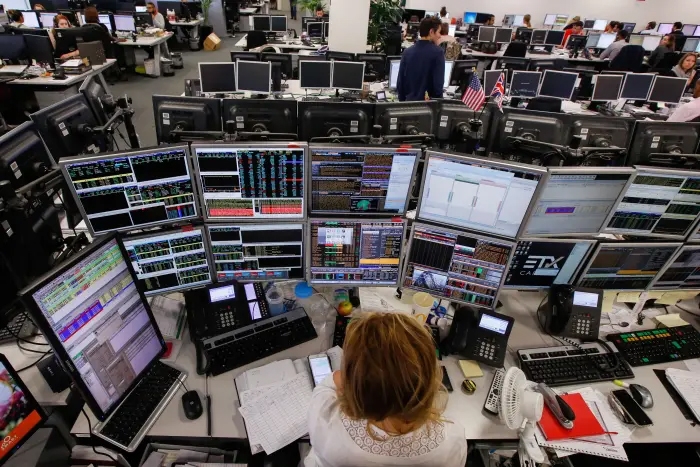
Equity markets have rebounded following last week’s substantial fall, ahead of the US election. Strong US ISM data have been a supporting factor. The US 10-year Treasury rate has also been in reversal mode, drifting lower. Commodity currencies have outperformed, although movements have been modest.
It’s a big week ahead with many events and key data scheduled, but forefront of mind is the US election. In the Presidential race, most polls give Biden a decisive lead in the popular vote, much more than Clinton had in the run-up to the 2016 election and, crucially, Biden is mostly ahead in the key swing states. The Senate race is a much closer call – a toss-up – and whether or not the Democrats can win the Senate will determine the size and timing of the next fiscal stimulus package. There is a good chance that we won’t know the result on election night, with counting of early votes not started in some States until the polls close, and this will hold up the final outcome.
Markets have taken on a more positive tone, following on from the cautious tone seen over the last couple of weeks. The S&P500 rebounded by 1.8% in early trading but the gain has been pared to less than 1% at the time of writing, while the Euro Stoxx 600 index closed up by 1.6%. Both indices fell by a hefty 5.6% last week.
On the economic front, the US ISM manufacturing gauge blasted up through the consensus estimate to reach its highest level in more than two years, with stronger new orders (up to 67.9) leading the charge. The data spoke to the two-speed economy, with a relatively stronger manufacturing sector versus services, the former less impacted by social distancing and more closely linked to the recovery led by China.
Despite the risk-on mood and stronger data, US Treasuries have performed well, with the 10-year rate down 3bps to 0.84%, reversing last week’s sell-off which had taken the rate to its highest level since June.
The bounce-back in risk appetite sees commodity prices outperforming led by CAD, with USD/CAD down 0.5% since last week’s close to 1.3250. Oil markets are trading in a better mood, with a rally in prices after Bloomberg reported that Russian oil companies were meeting with their Energy Minister to discuss the possibility of delaying the easing of OPEC+ production cuts until the end of Q1.
The NZD made a few attempts at testing sub 0.66 levels yesterday, but has recovered overnight to currently trade at 0.6620, slightly higher from last week’s close. The AUD traded below 0.70 for the first time since July, but has since pushed up to 0.7040, showing no lasting impact from stories of further apparent trade tensions with China. The South China Morning Post reported that China had banned imports of Australian timber from Queensland and suspended barley imports from a second grain exporter, and is expected to introduce bans on Australian imports of copper ore, copper concentrate and sugar this week. Some of these restrictions are said to reflect “biohazards”, while some speculate that it reflects ongoing China-Australian trade tensions.
NZD/AUD has traded below the 0.94 mark early this morning and is currently close to that level. The NZD is slightly higher on the other key crosses.
GBP is on the softer side of the ledger, slipping to 1.29 and down as low as 1.2855 overnight, following the weekend news of a month-long lockdown ahead. On UK-EU trade talks, a spokesman for UK PM Johnson told reporters that the UK side was working hard throughout this intensive period of talks to seek to bridge the significant gaps that still remained in the most difficult areas. On fishing, he noted that progress will only be made if the EU “accepts the reality” that the UK will have the right to control access to its waters. A Bloomberg story early Monday had suggested that a work-around solution to this fishing issue had been agreed.
The domestic rates market traded with a heavy tone, with NZGBs up 2-3bps across the curve and swap rates up 1-2bps. The market will likely trade cautiously ahead of next week’s MPS, which is the key focus after the US election is out of the way.
The only event of note on the economic calendar over the next 24 hours is the RBA’s policy announcement. Further stimulus has been well-telegraphed by the RBA for this meeting and the market is well-priced for a 15bps cut to the cash rate and 3-year yield targets to 0.1%. The key question is what sized QE-bond buying programme – focused on the 5-to-10-year sector of the curve – with the market thinking of an initial programme of around $100b, which can be upscaled in the future. The proximity of the US election may limit the immediate market reaction to the announcement.

We welcome your comments below. If you are not already registered, please register to comment
Remember we welcome robust, respectful and insightful debate. We don't welcome abusive or defamatory comments and will de-register those repeatedly making such comments. Our current comment policy is here.